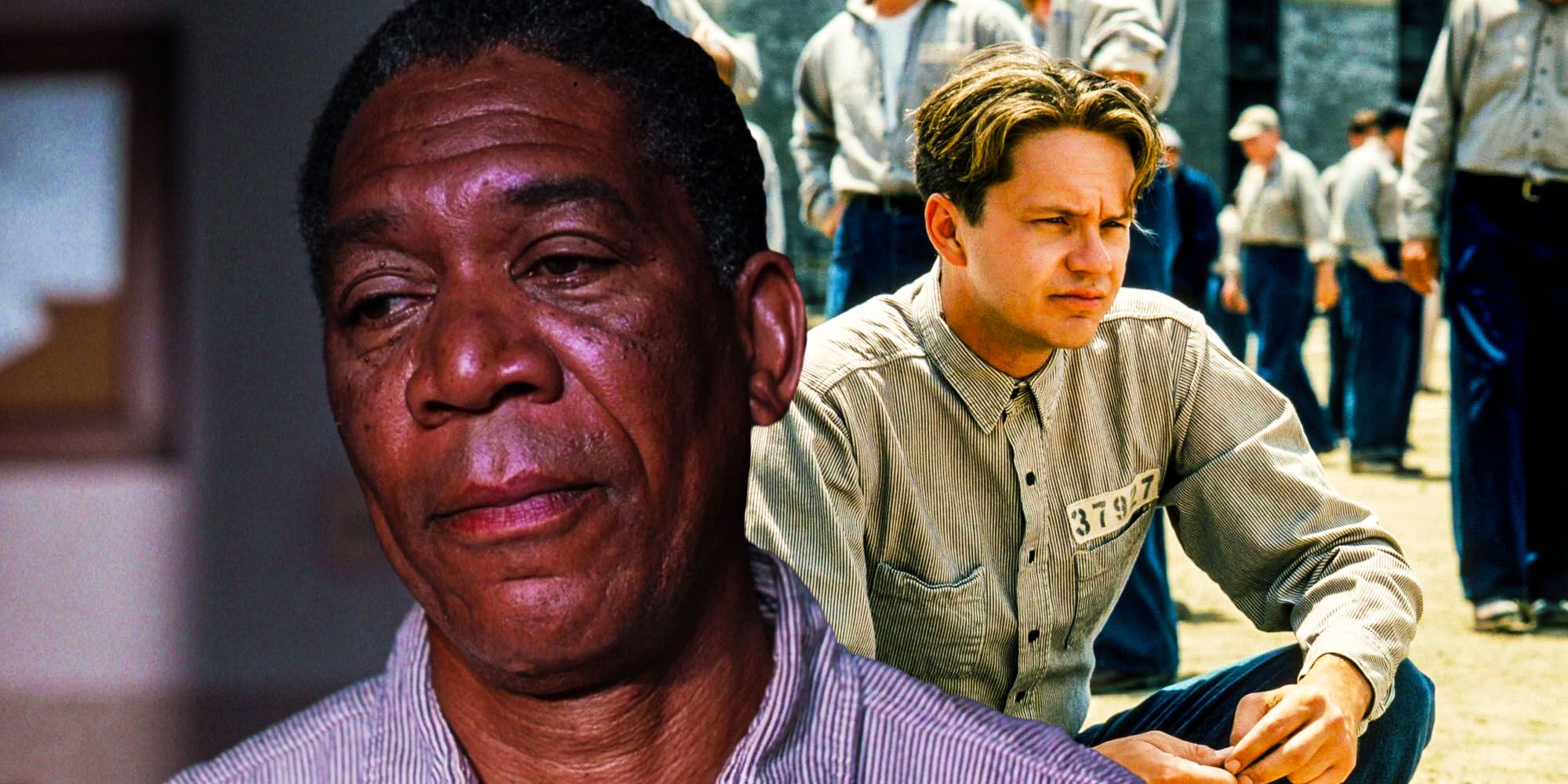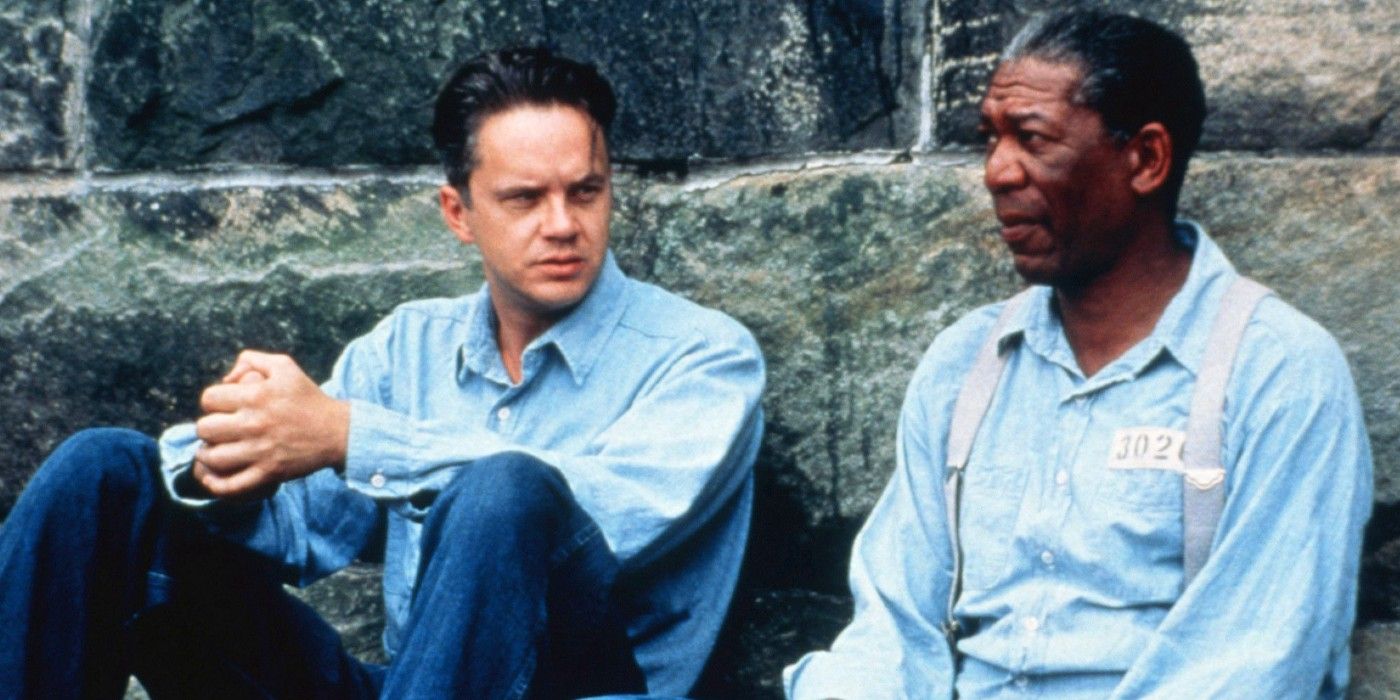Red (Morgan Freeman) narrates The Shawshank Redemption, despite Andy Dufresne (Tim Robbins) being the movie’s protagonist. Based on the Stephen King novella Rita Hayworth and the Shawshank Redemption, director Frank Darabont’s 1994 film is one of the most critically acclaimed movies of all time. Andy, a banker, serves a double life sentence at Shawshank State Prison in 1947 for the murder of his wife and her lover. While Andy maintains his innocence at Shawshank, he develops a close bond with fellow inmate Red — who tells the story of Andy’s subsequent prison escape and public exposure of Shawshank’s inner corruption.
Red, who also carries a life term, draws his notoriety at Shawshank from his uncanny ability to smuggle contraband into the prison, such as the rock hammer and posters Andy uses for his escape plan. The makings of Andy’s plan to break out of Shawshank when his attempts to be exonerated fall flat occur unbeknownst to both Red and the audience, setting up a grand reveal at the movie’s conclusion narrated by Red.
While the movie’s focus on Andy’s time in prison and eventual escape establishes meaning for the aforementioned character’s development, it serves a greater purpose for Red's Shawshank experience (who's in jail for a similar sentence as Andy). Red’s narration enforces his stature as the film’s focal point and that The Shawshank Redemption’s predominant themes of hope and humanity do not merely encompass Andy’s story of perseverance, but more so Red’s journey of wish fulfillment and Andy’s role in it.
At his core, Red is a pessimist, which the movie establishes from the start. Upon first laying eyes on a demoralized Andy entering Shawshank, Red views him as weak and bets he will be the first of the new batch of prisoners to break down. Furthermore, Red has been institutionalized by the prison system and had appeals for parole denied twice despite insisting on his successful rehabilitation. At the time when Red encounters Andy, the former has fearfully accepted the fate of spending the rest of his life behind bars. Andy’s arrival signifies a turning point for Red, as his actions such as sharing beers with the other inmates after tarring a rooftop or playing opera music over the prison loudspeakers, provide Red with a sense of hope.
Red’s position as the heartbeat of Shawshank’s prisoner population makes his narration particularly effective. He represents the common state of mind shared by other longtime inmates, such as Brooks Hatlen, who have spent so much of their life within the prison’s walls that they cannot imagine a life outside of them. Illustrated by his remarks on Andy’s impact on his increased sense of hope, Red’s narration humanizes and further develops his own character to an extent that could not have been achieved otherwise.
Red’s telling of Andy’s story through his own eyes has resulted in some theorizing that The Shawshank Redemption’s ending was merely a fantasy and that Red remained in prison for the rest of his life, as he feared. Due to his cynical nature, Red can be considered an unreliable narrator. Andy’s grand escape from Shawshank is Red’s manifestation of his own desire to avoid death in prison. For Red, Andy’s journey to freedom serves as an impetus for his own eventual release, after which he meets Andy in Mexico and the two bask in their newfound lives far away from the dreary confines of Shawshank.


